Well Now Autumn 2020
Live zoom session Mondays 07:00 – 8.30pm.https://us02web.zoom.us/j/85804373584
Meeting ID: 858 0437 3584 Passcode: 078019
Activity One
Eating and Wellbeing
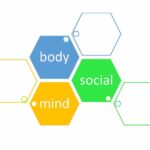
Can you name some of the pieces you are puzzling together to find out what eating for wellbeing means for you? Of course everything is inter-linked! But to be practical I have separated out some topics:
Why is body important?
How does your mind play a role? We’ll expand on this in particular the next activity.
What about social context?
What other topics go in the blank pieces for you?
What does eating for wellbeing mean for you? It might be useful to write a definition. One way of doing this is first, to write a list of what’s important to you around food and eating. Second, check this against your puzzle pieces to make sure you’ve covered what matters. Three, string everything together into a few sentences.
I
Activity Two
- research is still relatively new so advice changes for use in clinical conditions
- high intake in some high fat diets
- may be low in plant-based diets where no supplement is taken
- and often low in an average western diet
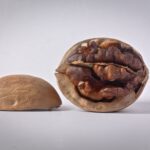
- linked to mental wellbeing
- also strongly linked to heart health
- and improves some allergic symptoms
- animal foods seem to be the best source?
Any ideas?
See activity 8 if you want to check your answer.

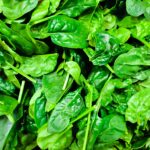
Activity Three
Myth Busting with a Bite Size Carb Quiz
We’ll stay with nutrients by exploring popular ideas about high carbohydrate foods. That said, remember it’s fine to skip anything that doesn’t feel helpful for you at the moment. So if going into any sort of detail about nutrients makes you feel at all unsafe maybe you want to pass on this: that’s fine.
I have been interested in nutrition science for a long time. When I was at school I read my way through whatever books I could get my hands on, without any ability to critically engage with the authors’ ideas. The same sorts of things are still being said such as ~
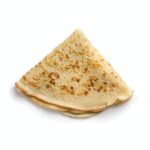
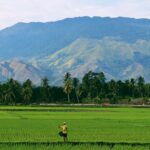
o Honey is better for you than sugar
o Potatoes are fattening
o Brown bread fills you up for longer than white bread
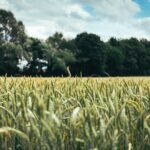

It gives me brain boggle just reading them now! For starters, what does “better for you” even mean? How would you respond to these statements? I’ll discuss them in the live session. This an help us identify misinformation or unconscious beliefs about high carbohydrate foods.
Images by Mockup Graphics, Peter Feghali, Sandy Zebua, and Usamah Khan on Unsplash
Are there any statement you want to add to the list? You can email these to me or mention them in the chat or in person if you’re able to attend.
I’ll write a few notes in next weeks lesson for anyone who can’t attend the live session.
Activity Four
Activity Five
Our set point or settling point can be ‘reset’ as adults. A key factor in raising settling point is dieting. This happens as the body responds to threat of starvation by ensuring more fat is stored to enable survival.
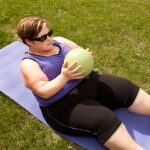


Because fat stigma constructs fat as wrong it always seeks to explain fatness as a deviation from ‘normal’ i.e. thin. As a result it encourages us to look for explanations for fatness. One common false explanation is that all fat people are above their ‘real’ settling point. That’s fat phobic toxic nonsense. In a group of fat chronic dieters who subsequently found ease with eating, some people’s weight would be unchanged. In set point theory, these people are at their set point or settling point. Some people would lose weight. In set point theory, these people were above their set point.
In short, adult weight is strongly determined by our genetic make-up as this interacts with our life histories and circumstances. There is no ‘nature’ independent of ‘nurture’ in living beings. The story of Elsie Widdowson’s research helps illustrate that we develop as a biology-biography combo. It also highlights how knowledge on interactions is designed out of mainstream science.
Activity Six
Omega 3
The nutrient in activity 2 is omega 3. The high fat diet I had in mind is the traditional diet of Inuit people. This contains lots of fish and whale fat and is very high in omega 3.
Why do you think I have honed in with information on the benefits of omega-3 in the diet, rather than say, the benefits of eating vegetables? Am I saying that omega 3 is a ‘super nutrient?’
Omega-3 fats are essential for wellbeing. They play a vital role in inflammatory processes and this links them to heart health (as they maintain arteries) and some allergic symptoms.
Oily fish is a good source of omega 3. If you’re a fish eater it’s recommended that you eat oily fish once a week. Can you think when you last ate some?
Conundrum: tuna is an oily fish. Some timed tuna has had the oil and hence the omega 3 removed. That’s why tuna in brine can be really dry. So, fresh or frozen tuna contains omega 3 but not all tinned tuna contains omega 3. This doesn’t mean there’s anything wrong with it. It just means it’s not a source of omega 3.
If you don’t eat fish it’s recommended that you eat plant sources of omega 3 every day (more below), or take a supplement (FAO and EFSA suggest adults take 250 milligrams per day of a long-chain omega-3 fat (EPA and DHA).
Here’s a few key points ~
There are three main omega-3 fats, EPA (eicosapentaenoic acid), DHA (docosahexaenoic acid) and ALA (alpha-linolenic acid). The body uses DHA and EPA and can make these from converting ALA. ALA is an essential fatty acid.
The omega-6 fatty acid linoleic acid (LA) is also essential for health.
Marine algae is a rich natural source of DHA and EPA. Oily fish is high in omega-3 fats because the fish eat marine algae. Oily fish common in the UK are herring, kippers, mackerel, pilchards, sprats, sild, salmon, sardines and trout (fresh, chilled and tinned varieties). What are the varieties of oily fish locally available to you?
Meat from grass fed animals can also contain significant amounts of omega-3 fats.
EPA and DHA are not found in plant foods. However, some plant foods contain ALA that the body converts to EPA and DHA. Rapeseed (or canola) oil, many nuts and dark green leafy vegetables contain ALA.
Western diets tend to be higher in omega 6 than omega 3. Changing this ratio by eating less omega 6 can help the body convert ALA into DHA and EPA. This can be especially relevant if you don’t eat fish when getting enough ALA can take planning. You can change the ratio by not having lots of omega-6-rich pumpkin and sunflower seeds and having more other nuts and seeds, and using rapeseed oil in cooking. International NGO food organisations recommend non-fish eaters have at least a tablespoon of chia seeds or ground linseed, two tablespoons of hemp seeds, or six walnut halves daily. Because the conversion rate is variable, the UK Vegan Society suggest people regularly eat double this amount.
Omega-3 fats may also be added to foods during manufacture. For example, some soya milks and yogurts contain omega-3 fats.
Why I ask about omega 3
How would you feel if you’re someone who usually enjoys eating vegetables but hardly ate any for a month? Probably bloated and bored. What about if you hardly ate any omega 3 for a month? Well, you may not feel any different. And even if you did, it’s not as easy to link this change to lack of omega-3.
It is quite easy to know how eating or not eating vegetables impacts how we feel. But most people can’t ‘tune in’ to the benefits of omega-3, or the effect of deficiency, in the same way. That’s why I highlight omega-3 – because it’s often low in people’s diets and because the ‘feel good’ effects are not something we are usually conscious of from body signals it’s helpful to use the intellect too.
I could write a majorly long list of how vegetables are vital in the body. So I’m not saying that omega-3 is a super nutrient, or oily fish a super food, just that it’s important to have omega-3 fats regularly in the diet and oily fish is a good source. And as body signals don’t give timely feedback, you might want to think of something that gets you into the habit of having oily fish once a week. Or planning ways to include non-fish sources daily, or a supplement.
(BTW The evidence on the varied ways in which omega-3 fats have benefits in the body is convincing but by no means always certain.)

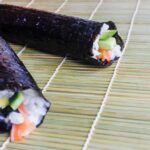

Activity Seven
Three Ideas for Reflection
- Look out for nutrition messages during the week. Are there any that sound suspect to you? How does it make you feel when you hear them? What can you learn from your response?
- Draw a time-line noting when you introduced new foods to your cupboard or started experimenting when eating out. Can you identify where any ‘food fashions’ influenced your eating? Perhaps it was a ‘must have’ new bread, or ‘superfood’, or you began kick-starting the day with a coffee on your way to work, or simply discovered something fantastic that you’d never tried before.
- Have there been any events that have changed or disrupted your everyday eating?
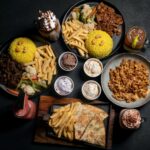

Activity Eight
A Reminder to Go Gently
Remember, some of these questions might land deeply and feel unsettling. It’s fine to be unsettled – we need this for change to happen. It’s also true that there’s a point at which we can be too unsettled to engage with learning, which clearly isn’t helpful. We need a steady place in ourselves to return to (the body awareness exercises will help with this) as we adjust to new ways of being with food, emotions, knowledge and so on. 
The most important thing for the learning and healing that’s happening here is that you explore your feelings and beliefs. This means being able to engage, and this means pacing yourself. Don’t worry about doing everything that’s suggested, amount doesn’t matter. It’s more important that you can be present with whatever you do, even for a short time and even for a tiny amount.
Last question, what are you looking forward to? Have you got any treats planned? If not, now is a great time to put something in your diary!
See you soon ~
